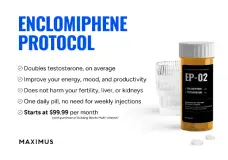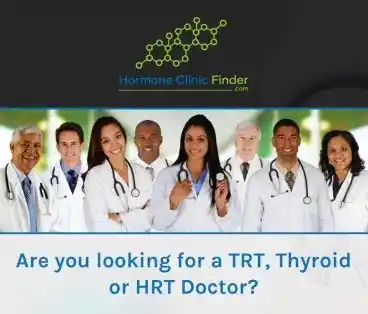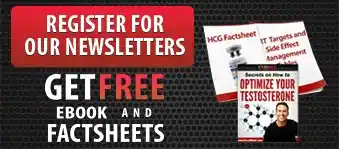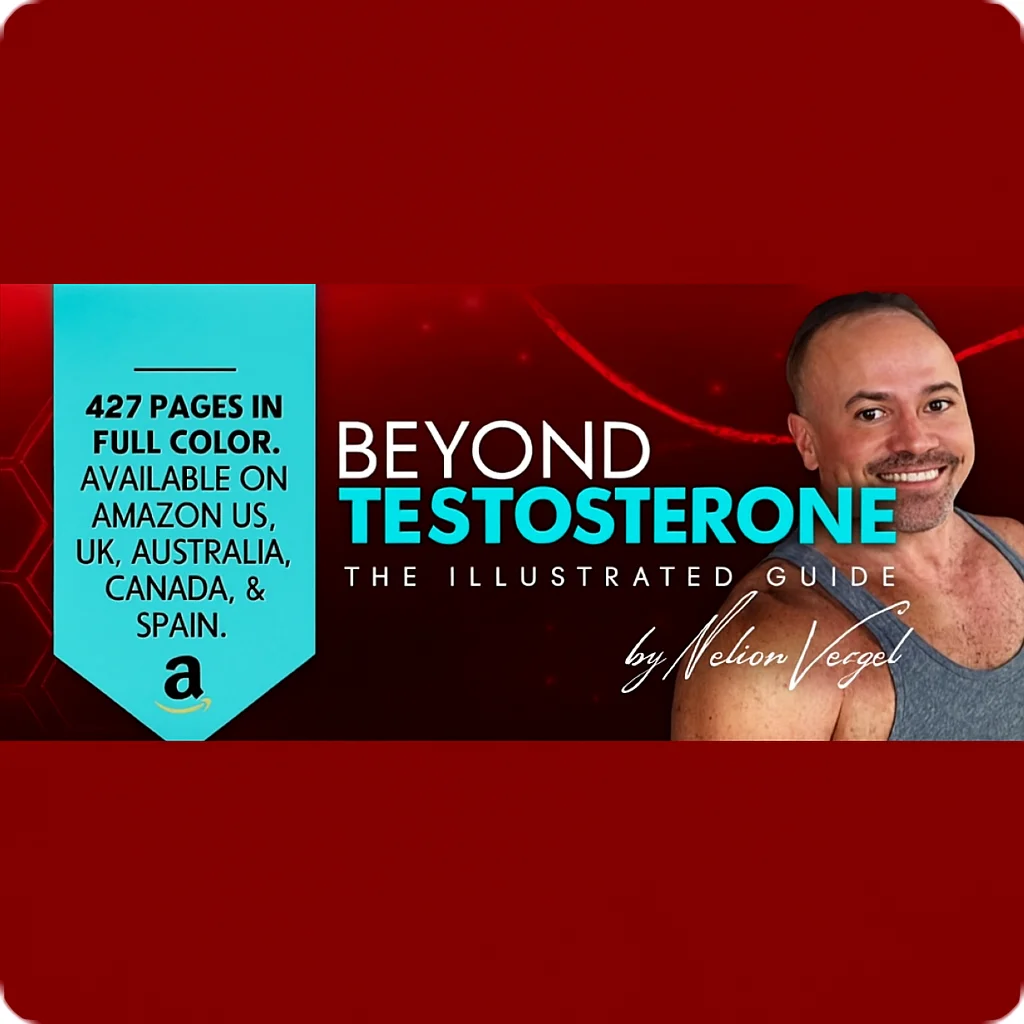Study: Low estrogen can cause problems for men
Dr. Joel Finkelstein, an endocrinologist at Harvard Medical School and the lead author of a new study, talks about the effects of declining estrogen in men.
https://www.nejm.org/doi/full/10.1056/nejmoa1206168

Department of Medicine Grand Rounds presentation by Dr. Joel Finkelstein, Harvard Medical School.

The Critical Roles of Androgens and Estrogens in Male Physiology: Insights from Clinical Research
The annual Dr. John Leonard Lecture at the University of Washington’s Department of Medicine is a tribute to a physician remembered for his intellectual curiosity, diagnostic skill, and camaraderie. This year’s lecture was delivered by Dr. Joel Finkelstein, a leading figure in bone physiology and male reproductive endocrinology, whose research has shaped our understanding of how androgens and estrogens impact male health.
Testosterone: History, Hype, and Unanswered Questions
Testosterone has been at the center of medical and popular discourse for decades, often making headlines due to doping scandals in sports. From ancient remedies involving testicular tissue to Nobel Prize-winning discoveries in the 1930s, the hormone’s history is long and colorful. Despite its widespread use, especially as a therapy for aging men, fundamental questions remain unanswered:
Defining Testosterone Deficiency: The HIM Study
To address these gaps, Dr. Finkelstein’s team conducted the Hypogonadism in Men (HIM) study, recruiting healthy men aged 20–50 and manipulating their hormone levels under controlled conditions. The study aimed to pinpoint the testosterone thresholds at which adverse physiological changes begin to occur.
Key findings included:
Androgens vs. Estrogens: The HER Study
Because most circulating estrogen in men is derived from testosterone via aromatization, it’s difficult to distinguish their respective roles. The Hypogonadism with Estrogen Removal (HER) study addressed this by adding an aromatase inhibitor to block estrogen production.
Findings revealed:
Dr. Finkelstein speculated that the critical role of estrogen in men may be an evolutionary byproduct of its functions in women, such as mobilizing minerals for lactation and regulating reproductive cycles. In men, estrogen deficiency leads to fat accumulation, bone loss, and reduced libido—outcomes that are maladaptive in modern life but may have had evolutionary utility in women1.
Unresolved Questions and Future Directions
Despite these advances, long-term safety and efficacy data for testosterone therapy remain lacking, especially for older men. Observational studies suggesting cardiovascular risks are inconclusive, and only large, prospective trials can provide definitive answers. There is also renewed interest in the potential therapeutic role of estrogen in men, particularly for mitigating side effects in prostate cancer patients undergoing androgen deprivation therapy1.
Conclusion
The research presented underscores the complex, distinct, and sometimes unexpected roles of androgens and estrogens in male physiology. A nuanced, physiology-based approach is essential for diagnosing and treating hypogonadism, guiding future clinical trials, and ultimately improving men’s health outcomes
Video (2013).

Study: Low estrogen can cause problems for men (2013)
Dr. Joel Finkelstein, an endocrinologist at Harvard Medical School and the lead author of a new study, talks about the effects of declining estrogen in men.
Gonadal Steroids and Body Composition, Strength, and Sexual Function in Men (2013)
Joel S. Finkelstein, M.D., Hang Lee, Ph.D., Sherri-Ann M. Burnett-Bowie, M.D., M.P.H., J. Carl Pallais, M.D., M.P.H., Elaine W. Yu, M.D., Lawrence F. Borges, M.D., Brent F. Jones, M.D., Christopher V. Barry, M.P.H., Kendra E. Wulczyn, B.A., Bijoy J. Thomas, M.D., and Benjamin Z. Leder, M.D.https://www.nejm.org/doi/full/10.1056/nejmoa1206168
Executive Summary
This study critically examines the physiological consequences of varying testosterone and estradiol levels in men, aiming to differentiate the roles of androgen deficiency, estrogen deficiency, or both, in the clinical manifestations of hypogonadism. Historically, male hypogonadism has been solely attributed to androgen deficiency, largely ignoring the concurrent decline in estradiol (which is metabolized from testosterone). Through a controlled experiment involving healthy men whose endogenous gonadal steroids were suppressed and then replaced with varying doses of testosterone, both with and without aromatase inhibition (to block estrogen production), the study reveals distinct and synergistic roles for testosterone and estradiol. Key findings demonstrate that lean mass, muscle size, and strength are primarily regulated by androgens (testosterone), while fat accumulation is predominantly a consequence of estrogen deficiency. Furthermore, sexual function (desire and erectile function) is regulated by both androgens and estrogens. These findings challenge current diagnostic and management approaches for hypogonadism, suggesting a more nuanced understanding of gonadal steroid interplay is necessary.Key Themes and Most Important Ideas/Facts
- Challenging the Traditional View of Male Hypogonadism:
- The prevailing approach to diagnosing testosterone deficiency often relies on a single laboratory criterion (testosterone level below 2 SD of healthy young adults) and attributes all symptoms solely to androgen deficiency.
- The study highlights that "Current approaches to diagnosing testosterone deficiency do not consider the physiological consequences of various testosterone levels or whether deficiencies of testosterone, estradiol, or both account for clinical manifestations."
- It emphasizes that "More than 80% of circulating estradiol in men is derived from the aromatization of testosterone," meaning a decline in testosterone naturally leads to a decline in estradiol. The traditional view "typically ignored" the potential role of this concomitant decline in estrogens.
- Differential Roles of Testosterone (Androgens) and Estradiol (Estrogens):
- The study's most significant contribution is its clear delineation of the distinct effects of testosterone and estradiol on various physiological outcomes:
- Lean Mass, Muscle Size, and Strength: These are "attributable to changes in testosterone levels." The study found that "Androgen deficiency accounted for decreases in lean mass, muscle size, and strength." Specifically, lean mass and thigh-muscle area decreased with placebo or 1.25g testosterone daily (mean testosterone level 44-191 ng/dL), and leg-press strength fell only with placebo administration.
- Body Fat Accumulation: This is "primarily related to changes in estradiol levels." "Estrogen deficiency primarily accounted for increases in body fat." When aromatization was inhibited (cohort 2, low estradiol), "the percentage of body fat increased in all groups" regardless of testosterone dose. The interaction term for cohort-testosterone dose was significant for body fat measures (percentage of body fat, subcutaneous-fat area, intraabdominal-fat area), indicating an independent effect of estradiol.
- Sexual Function (Desire and Erectile Function): Both hormones play a role. The study found that "Both androgens and estrogens contributed to the decline in sexual function." Sexual desire declined progressively with decreasing testosterone doses, but inhibition of estrogen synthesis was also "associated with significant decreases in sexual desire (P<0.001) and erectile function (P=0.022)." This provides "additional evidence of an independent effect of estradiol on these measures."
- Varying Testosterone Thresholds for Different Outcomes:
- The study found that "The amount of testosterone required to maintain lean mass, fat mass, strength, and sexual function varied widely in men."
- "Fat accumulation began with mild gonadal steroid deficiency (a testosterone level of approximately 300 to 350 ng per deciliter), whereas lean mass, thigh-muscle area, and muscle strength were preserved until gonadal steroid deficiency was more marked (a testosterone level ≤200 ng per deciliter)."
- Sexual desire and erectile function showed distinct patterns of decline at different testosterone levels.
- Clinical Implications:
- Revised Diagnostic Approach: The findings "support changes in the approach to evaluation and management of hypogonadism in men." They "provide a physiological basis for interpreting testosterone levels in young and middle-aged men and identifying the adverse consequences that are most likely to occur at various gonadal steroid levels."
- Importance of Estradiol Measurement: Given the crucial role of estrogen, the study suggests that "measuring estradiol might be helpful in assessing the risk of sexual dysfunction, bone loss, or fat accumulation in men with hypogonadism."
- Treatment Considerations: Treatment with "aromatizable androgens would be preferable to treatment with nonaromatizable androgens in most men with hypogonadism," as non-aromatizable androgens would not allow for the production of necessary estradiol.
- Individualized Treatment: The study emphasizes that "each person's specific clinical scenario should be considered when interpreting the clinical significance of the circulating testosterone level," as some men may experience adverse changes at different levels.
- Potential Relevance for Aging Men: While requiring further study, the observed declines in body composition, strength, and sexual function in aging men "are reminiscent of organic hypogonadism in young men," suggesting that "some of the changes observed in aging men may be related to age-associated changes in gonadal steroids and may be preventable with appropriate replacement."
- Study Design and Methodology:
- 198 healthy men (20-50 years old) had endogenous testosterone and estradiol suppressed using goserelin acetate.
- They were then randomized to receive placebo or varying daily doses (1.25g, 2.5g, 5g, 10g) of testosterone gel for 16 weeks (Cohort 1).
- Another 202 healthy men followed the same protocol but also received anastrozole (an aromatase inhibitor) to suppress the conversion of testosterone to estradiol (Cohort 2).
- Primary outcomes were changes in body fat and lean mass, with secondary assessments including subcutaneous/intraabdominal fat, thigh muscle area/strength, and sexual function.
- This rigorous design allowed for the isolation of effects related to testosterone, estradiol, or both, which is a major strength.
Limitations Identified by the Authors
- Study Duration: The 16-week duration was relatively short, primarily to avoid clinically significant changes like bone loss in healthy men. Longer suppression periods might reveal greater changes.
- Testicular Estradiol Secretion: A small portion of estradiol is directly secreted by the testes and may not be restored with exogenous testosterone administration.
- Local Aromatase Activity: Changes induced by aromatase inhibition might primarily reflect local aromatase activity, meaning circulating estradiol levels may not perfectly reflect all estrogen effects.
- Acute vs. Gradual Decline: The model of acute gonadal steroid deprivation might differ from gradual declines observed over years.
- Continuum of Effects: The relationship between declining gonadal steroids and adverse consequences is likely a continuum, not a rigid threshold.
Conclusion
This groundbreaking study fundamentally alters the understanding of male hypogonadism by demonstrating the distinct and synergistic roles of testosterone and estradiol in regulating body composition, strength, and sexual function. It provides strong evidence that while androgens primarily drive muscle mass and strength, estrogens are crucial for regulating body fat and contribute significantly to sexual function. These insights have profound implications for the diagnosis and treatment of hypogonadism, advocating for a more comprehensive assessment that considers both testosterone and estradiol levels, and for treatment approaches that allow for adequate estrogen synthesis.Estrogen-It's what makes a real man: Surprising findings from "HIM" and "HER" (2014)
Department of Medicine Grand Rounds presentation by Dr. Joel Finkelstein, Harvard Medical School.
The Critical Roles of Androgens and Estrogens in Male Physiology: Insights from Clinical Research
The annual Dr. John Leonard Lecture at the University of Washington’s Department of Medicine is a tribute to a physician remembered for his intellectual curiosity, diagnostic skill, and camaraderie. This year’s lecture was delivered by Dr. Joel Finkelstein, a leading figure in bone physiology and male reproductive endocrinology, whose research has shaped our understanding of how androgens and estrogens impact male health.
Testosterone: History, Hype, and Unanswered Questions
Testosterone has been at the center of medical and popular discourse for decades, often making headlines due to doping scandals in sports. From ancient remedies involving testicular tissue to Nobel Prize-winning discoveries in the 1930s, the hormone’s history is long and colorful. Despite its widespread use, especially as a therapy for aging men, fundamental questions remain unanswered:
- Does testosterone therapy improve physical function, reduce fracture risk, or enhance sexual function?
- Is it safe, particularly regarding prostate health and cardiovascular risk?
- What is a “normal” or optimal testosterone level for men?
Defining Testosterone Deficiency: The HIM Study
To address these gaps, Dr. Finkelstein’s team conducted the Hypogonadism in Men (HIM) study, recruiting healthy men aged 20–50 and manipulating their hormone levels under controlled conditions. The study aimed to pinpoint the testosterone thresholds at which adverse physiological changes begin to occur.
Key findings included:
- Body Fat: Increases in total and subcutaneous fat occurred at testosterone levels of 300 ng/dL or lower.
- Lean Mass and Muscle Strength: Significant declines were only observed at very low testosterone levels (below 200 ng/dL).
- Bone Health: Markers of bone turnover increased as testosterone dropped, with bone loss detectable at levels below 200 ng/dL.
- Sexual Function: Sexual desire declined in a linear fashion as testosterone decreased, even within the reference range, while erectile function remained stable until levels fell below 200 ng/dL.
- PSA and Lipids: PSA showed a linear dose-response to testosterone, but there was no clear effect on LDL or total cholesterol. HDL increased as testosterone was lowered1.
Androgens vs. Estrogens: The HER Study
Because most circulating estrogen in men is derived from testosterone via aromatization, it’s difficult to distinguish their respective roles. The Hypogonadism with Estrogen Removal (HER) study addressed this by adding an aromatase inhibitor to block estrogen production.
Findings revealed:
- Fat Accumulation: Estrogen deficiency, not testosterone deficiency, was responsible for increases in total and subcutaneous fat, even at high testosterone levels.
- Lean Mass and Muscle Strength: These were regulated purely by androgens.
- Bone Health: Estrogen played a critical role in preventing bone loss; blocking estrogen led to significant decreases in bone density within just 16 weeks.
- Sexual Desire: Estrogen deficiency caused a marked decline in libido, highlighting its importance for male sexual health.
- Other Outcomes: PSA and leptin were regulated by androgens, while insulin resistance worsened with estrogen deficiency1.
Dr. Finkelstein speculated that the critical role of estrogen in men may be an evolutionary byproduct of its functions in women, such as mobilizing minerals for lactation and regulating reproductive cycles. In men, estrogen deficiency leads to fat accumulation, bone loss, and reduced libido—outcomes that are maladaptive in modern life but may have had evolutionary utility in women1.
Unresolved Questions and Future Directions
Despite these advances, long-term safety and efficacy data for testosterone therapy remain lacking, especially for older men. Observational studies suggesting cardiovascular risks are inconclusive, and only large, prospective trials can provide definitive answers. There is also renewed interest in the potential therapeutic role of estrogen in men, particularly for mitigating side effects in prostate cancer patients undergoing androgen deprivation therapy1.
Conclusion
The research presented underscores the complex, distinct, and sometimes unexpected roles of androgens and estrogens in male physiology. A nuanced, physiology-based approach is essential for diagnosing and treating hypogonadism, guiding future clinical trials, and ultimately improving men’s health outcomes
Video (2013).
Last edited by a moderator:















